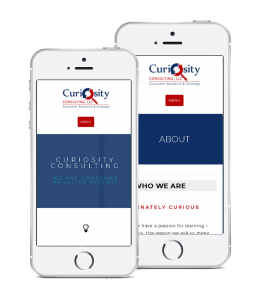Google has never been reluctant to shake up the status quo when it comes to their search algorithms. But with the new update focused on mobile-friendliness, they may be making their biggest transformation yet, at least where companies are concerned.
The past few years have seen two charmingly codenamed updates, Panda and Penguin, that dramatically reoriented the search engine optimization landscape. These game-changers defined new best practices for the field and penalized blackhat tactics that once reliably lifted sites to the top of the rankings—all in the interest of serving Google users more relevant content.
On April 21, the search giant made another update aimed at delivering higher-quality content, and this time they set their sights set on mobile-friendliness. Mobile search isn’t a new concern for Google—they’ve telegraphed their interest through experimentation with icons and labels for mobile-friendly sites. But the forthcoming algorithm update represents their most serious attempt so far to cultivate a more mobile-friendly web, making mobile-friendliness a ranking signal. With this algorithm change, they may shake up search results more dramatically than Panda and Penguin.
For companies, the update means it’s time to prioritize mobile-friendliness more seriously than ever before.
Why professional services firms need to catch up
Historically, professional services firms have been somewhat slow to catch up on online marketing trends and best practices. Today, many organizations have begun to make use of tools and techniques like search engine optimization, content marketing, A/B testing, and more, but Google’s forthcoming update means they will need to catch up on mobile as well.
Where do professional services firms stand on mobile today? The Content Marketing Institute 2015 B2B Marketing Report shows that only 58% of business-to-business marketers are planning to “create a better mobile strategy” this year. By contrast, 74% of consumer-facing businesses are planning to do the same.
This slow adaptation to the mobile world may account in part for a problem endemic to professional services firms. A recent study on referrals in the professional services marketplace found that nearly 30% of buyers rule out referrals based on a service provider’s website. Another study revealed that a firm’s website is buyers’ most common source of information when they are searching for new providers.
As mobile browsing grows more and more common, it’s easy to see how poor mobile experiences may be costing firms new business. And this phenomenon will only compound itself when sites that are not mobile-friendly begin to fall in search rankings, reducing firms’ visibility in one of today’s most important marketing channels.
How firms can prepare for the update
First, all firms—and all webmasters in general—should use Google’s Mobile-Friendly Test page to find out whether their sites meet the criteria for mobile-friendliness. If so, congratulations—you’ve already done the hard work. If not, then you’ll need to make some changes.
There are several approaches your organization can take to creating a mobile-friendly user experience:
- A separate mobile site. This is the old-school approach and is no longer recommended. It can be hard to keep up-to-date and easily lead to duplicate content, which in turncan lead to search engine ranking penalties from Google.
- A native mobile app. Many organizations have built native applications for Android and iOS. The good news is that by using Google’s relatively new App Indexing API, Android apps can be optimized to appear in search results.But a mobile app is no replacement for a natural, mobile-friendly website. Applications on iOS are not currently indexed, and for an Android app to show up in search results, it must already be installed on the user’s device. Plus, indexed apps will only serve mobile-friendly content to users with certain devices. In the meantime, the firm’s website will suffer in the search rankings as buyers conduct exploratory searches.
- A responsively–designed website. This is the approach that today’s companies should take. A responsive design uses simple CSS to allow the site to adapt naturally to a viewer’s device. It can adjust type, imagery, and design to suit either the small display of a searcher’s phone, an iPad, a laptop, or the large HD display of a conference room.
Responsive design is forward-looking, since it makes it easy for your site to adapt to new devices and form factors that may emerge. And a responsive design is the most straightforward way to pass Google’s mobile-friendliness test and gain the search ranking benefits.
As firms consider their priorities for 2015, they would be well-served to evaluate their mobile strategy. With Google set to reorient the search landscape once again, this year is an opportunity for firms to improve their visibility and connect with searchers (and potential buyers) in new ways.
Check out our Professional Services Website Planning Guide for more help as you consider updating your firm’s website to incorporate a mobile strategy.
(226)









